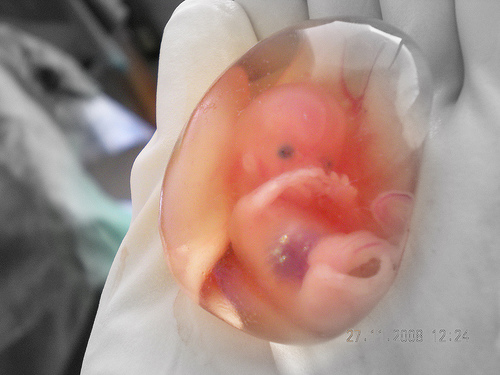By Rebecca Groen (Contributor) – Email
Date Posted: October 17, 2011
Print Edition: October 12, 2011
Though illegal in Canada until 1988, there is currently no set law on abortion. In the Canadian government’s attempts to remain neutral on the topic for the sake of not stepping on toes, what they have really done is cause the issue to change its focus. The issue seems to have changed from determining when life starts in the womb to whether or not it is ethical to kill human life. The lack of an abortion law as well as the blurred moral boundaries on this subject has led to an issue now commonly known as infanticide, or the practice of killing a human infant.
A recent example of infanticide involves a single 19-year-old mother-to-be who lives in Alberta. She secretly gave birth to her son in her parent’s basement, strangled him with her underwear, and then threw him over her neighbour’s fence. Though this incident took place in 2005, a final ruling was just decreed on September 9, 2011, overturning two previous charges of second-degree murder and replacing them with a lesser sentence of infanticide. She is to serve out a three-year suspended sentence within her community. The only reason she will spend time behind bars is because of the fact that she disposed of her son’s body by throwing him over the fence, a charge of undignified treatment to a human body. If the law is calling her son a human being for one charge, why is it ignoring his personhood for the more important charge of murder?
While the rise of infanticide is shocking on some levels, it is not really surprising. After all, what is infanticide but just the logic of abortion applied past the moment of birth? Since under Canadian Law we don’t value human life a few minutes before birth, why should we a few minutes after? Some even refer to infanticide as a “fourth-trimester abortion.”
There are only four differences between a child in the womb and a child a few inches away in her mother’s arms. These differences are: size, level of development, environment, and degree of dependency. These differences are commonly summed up in the acronym “SLED.” All of these vary along a spectrum according to a human’s age. The only defined point of change in personhood during the development of a human is the point of conception.
Peter Singer, a renowned ethicist who wrote Practical Ethics, also agrees that birth is not a satisfactory point in time to determine personhood. He also argues that it is entirely reasonable for an infant to be killed since newborns lack the essential characteristics of “personhood,” namely: rationality, autonomy, and self-consciousness. These standards for determining personhood are arbitrary.
This issue is easy to sweep under the rug, but we need to think about what the logical implications of our reasoning are. Personhood would vary on a spectrum due to how conscious we are, and based on these criteria, we should also be able to eliminate the disabled as well as the drug users and homeless population without thought or remorse. Singer bases the value of a person on certain abilities they have. As they grow older, they have more abilities and therefore have more value. This begs the question: what about those who are disabled? What about those who are elderly? Can we judge whether their lives are worth living?
We can learn lessons from history by looking at examples such as the Holocaust and the suppression of certain races through slavery. In these cases people were denied personhood based on arbitrary standards set by society. Are not Peter Singer’s arguments essentially doing the same thing? Is not Canada’s lack of laws around abortion allowing this injustice to occur?


